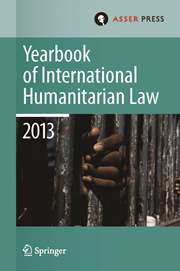No CrossRef data available.
Article contents
Chapter 8: Year in Review 2012
Published online by Cambridge University Press: 20 December 2013
Extract
The current conflict in Afghanistan has been in existence since October 2001, following the attacks on the United States (US) on 11 September 2001. Due in part to the 2011 death of Osama bin Laden and the further dismantling of Al-Qaeda, on 21 May 2012 the leaders of the NATO-member countries met in Chicago and agreed upon an exit strategy. The NATO-led ISAF Forces plan to give Afghan forces command of all combat missions by mid-2013, and move from combat roles to a role of supporting, advising, training and assisting the Afghan security forces. The withdrawal of the remaining 130,000 foreign troops is set to occur by the end of 2014.
The conflict in Colombia, categorized by most as a non-international armed conflict, continued between government forces and FARC (Fuerzas Armadas Revolucionarias de Colombia) rebels, resulting in what Human Rights Watch (HRW) terms “serious abuses” by the rebel guerrilla groups and paramilitary organizations. As a result of this conflict, ongoing since 1964, figures cited by HRW show more than four million Colombians have been displaced and more than 100,000 are displaced each year that the conflict continues. In November, the first peace talks in approximately a decade between the FARC and Colombian government officials began in Norway.
- Type
- Part III: Other Articles
- Information
- Copyright
- Copyright © T.M.C. Asser Instituut and the Authors 2012


